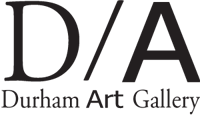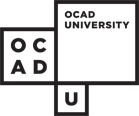Symposium
Artists and Researchers Discuss Art and Disability
The coupling of disability art with emerging research practices allows for a comparison of the values of embodied experience in academic and studio-based activities and a new formulation of their intersection.
The hybrid work being done by practitioners, both artists and researchers, describes a further shift away from the centre towards inclusive and experiential processes and results. Methodologies are likewise being expanded that transform the functions of research in ways that makes it more responsive to the complexities of the subject. This fusion of research and creation is evident in the work being done in the fields of art production, Disability Studies and Disability Art and Culture by all of the participants invited to the symposium. Their contributions to the dialogue will address the applicability of a research/creation model in the ongoing effort to bring more light and understanding to our evolving conception of disability and the contributions that disability culture brings to society generally.
Amanda Cachia, Independent Curator
Cripping Cyberspace: A Contemporary Virtual Art Exhibition
What does a crip intervention in cyberspace look like and how might it inhabit it? How might the representation of disability differ or be expanded online, in the space of a computer screen? Evolving technologies have enhanced access and assistance for disabled people to a new, dynamic level, where they are able to now communicate through computerized voice, text and image. Can cyberspace then, be considered a type of brain, or prosthesis, that provides emotional, intellectual and sensorial support for disabled people?
Emily Cook, OCAD University
Emily Cook holds a MFA in Printmaking from Louisiana State University (2008) which she undertook after completing her BFA at OCADU in 2005. Over the past ten years, her work has been included in over 30 group exhibitions in the United States and Canada. Her most recent solo exhibition, Dextrocardia, was presented at Lennox Contemporary in Toronto (2012). Since 2008, Cook has held the position of Sessional Instructor in papermaking and printmaking at OCADU. Her accomplishments have been recognized by nine different awards and scholarships, and her work can be found in both private and public collections, including the Toronto Reference Library Rare Books Collection.
Nancy Viva Davis Halifax, Graduate Program in Critical Disability Studies, York University
Disability as Difficult Knowledge: A Phenomenology of Undecidability
"Disability as undecidability is deeply unsettling to the cultural imaginary, particularly one that incorporates an image of the embodied self as whole, separate and invulnerable." - Shildrick, 763
The artist's embodiment of disability as "undecidability" unsettles and leaks through a cultural imaginary that requests a whole, separate and invulnerable embodiment. How does uncertain or undecidable embodiment effect artistic production? The proposed presentation addresses ordinary experiences of disability embodiment and their effects on the practices of art within community when they are made explicit.
Nancy Halifax's work involves everyday, ordinary practices and the performative. She finds herself using a broad definition of art in order to reflect upon, research, and respond to community ideas, narratives and memories. She lives along the intersections of impairment, disability and chronic illness.
Jay Dolmage, Canadian Journal of Disability Studies, University of Waterloo
Disability Space-Time-Economy
This presentation examines a series of disability metaphors that have worked to freeze disability in particular spaces, times, and economies, delimiting possibilities for critique. With reference to Canadian geographies, architecture and public institutions, this presentation will offer new possibilities for remaking public space; with reference to reified myths and histories of disability in Canada, it will remix crip chronologies; and, with reference to the late-capitalist values for non-normative bodies and minds, it will refigure the productive work of disability.
Deborah Fels, Ryerson University
Vibrotactility as a Viable Method for Creating More Inclusive Music
In this presentation creating vibrotactile music will be discussed as a theoretical and practical method of inclusive entertainment, particularly for people who are deaf or hard of hearing. A set of tactile instruments, Vibromotion and Vibrochord, as well as a vibrotactile display, the Emoti-Chair, will be presented and demonstrated. Vibrotactility is not only a new accessible art form but it is also allowing new media artists to explore a completely new genre.
Sarah Gibbons
Sarah Gibbons, BA (University of Ottawa) and MA (Queen's University), is a PhD candidate in the Department of English at the University of Waterloo. Her dissertation focuses on contemporary representations of disability in relation to theories of risk. Her primary research interests include cultural representations of autism, and intersections and tensions between disability studies and ecocriticism. Sarah is the Social Media Editor for the Canadian Journal of Disability Studies.
Ju Gosling, Together! Disability Arts and Human Rights Festival
Abnormal: Towards a Scientific Model of Disability
Disability Art is often dismissed as being 'Outsider Art' or 'Art/Occupational Therapy.' However, practitioners identify as part of an international art movement with its own unique theories and traditions. What distinguishes their movement, they argue, is its multi-disciplinary nature, not the fact that society defines its artists by their impairments. This presentation will examine the research project Abnormal: How Britain Became Body Dysphoric and the Key to a Cure.
Kim Jackson
Kim Jackson has long been working as an artist and activist with knowledge production based on the everyday experiences and expression from the margins of capitalism. Her work takes the form of anti-capitalist performative social arts.
Kim, together with Nancy Halifax, make up the Red Wagon Collective; using the arts for social justice in community.
Grahame Lynch, Ryerson University
Experiencing Art: Enhancing Experience for Extended Audiences with Transmedia Communication
For those members of the public whose capacity for direct experience of artwork is limited for reasons of ability or location, the means of exposure to cultural productions is often based in descriptive practice. This research project proposes a communication strategy aimed at enhancing public engagement and connecting audiences through nuanced multi-modal experiences. This transmedia model does not attempt to recreate the direct experience of an artwork; rather it encourages the development and sharing of new and highly individualized experiences that are accessible to members of the public with a diverse range of abilities.
Geoff McMurchy, Kickstart Disability Arts and Culture Festival, Founder
It's Our Turn to Tell the Story: Artists With Disabilities as Individuals and as a Cultural Movement
Drawing upon his experience as artist, disability advocate and Artistic Director of Kickstart Disability Arts and Culture, McMurchy will outline the foundations of the global disability arts movement and its manifestation in Canada. He will describe the roles that artists with disabilities can play within their community of peers, the arts community and the community at large. Also, he will anecdotally discuss definitions that have emerged within the Canadian movement, and explore issues around self-identity that confront artists, in terms of solo or collaborative artist, advocate, outsider, insider, artist with a disability, or disability artist.
Judith Snow, Laser Eagles Art Guild, Founder
Inclusion as Valuing Diversity
Inclusion is typically defined as the opposite of exclusion, but this does not capture the richness of the struggle for diverse abilities, cultures and ways of being to find a place in a society where "normal" is fundamental to the design of everything. Art that is created through facilitation challenges what and how we determine value. It provides a context for examining and building partnership and collaboration. Inclusive, collaborative art making stands as a beacon to highlight human capacity against the hegemony of an increasingly robotic, materialist monoculture. This presentation will explain and show examples of making art through cooperation. I will place this process in a cultural context and provide participants with a sense of how working with diverse personal gifts can enrich society for everyone.
Janis Timm-Bottos, Creative Arts Therapies, Concordia University
When Being the Audience is Not Enough: Becoming the "Loving Third"
This presentation will address how a storefront classroom/studio brings together diverse individuals who serve as social supports for each other in order to create meaningful community life. Kristeva's notion of "the loving third" or "the loving support of the social" (in Oliver, 2002) helps us to think about how a sense of belonging through the arts can counteract alienation that has been imposed by values of the dominant culture. Watkins and Shulman's (2008) "liberation arts" demonstrate how individual and groups limit situations that can be re-imagined through sustained studio relationships, fostering a greater sense of wellbeing, as well as positively influencing an entire community's sense of hope. Folk art methods of interaction, such as: "the third hand," "each one, teach one," non-juried community art exhibits and métissage practices will be shared as they are currently being researched at La Ruche d'Art: Community Studio and Science Shop in Montreal, affectionately known as the "art hive."
Jutta Treviranus, Inclusive Design, OCAD University
Outside-In
Our economic, social and physical survival depends on diversity. Inequity and disparity of opportunity erodes our social cohesion, health and wealth. However, we rarely design our systems and practices for diversity and inclusion. The margins encompass us all. Our design should begin at the margins for a healthier, wealthier and wiser society. This session will explore current disruptions brought about by global networks, pull markets, mass customization systems, cloud services and pervasive technologies that provide opportunities to support greater diversity and inclusion.
Symposium Schedule
(All events at the Durham Town Hall, unless indicated)
Collaboration and Inclusion
Friday, Sept. 27
9:00 - 12:30
Walkerton Clean Water Centre
Jutta Treviranus
Deb Fels
Janis Timm-Bottos
Judith Snow
Discussion
Creation and Research
Friday, Sept. 27
1:300 - 4:30
Walkerton Clean Water Centre
Emily Cook
Grahame Lynch
Nancy Halifax
Kim Jackson
Discussion
Deaf and Disability Art Movements
Saturday, Sept. 28
9:00 - 12:30
Ju Gosling
Geoff McMurchy
Discussion
Public Engagements
Saturday, Sept. 28
1:30 - 5:30
Art Hive
(Chicory Common Cafe)
With Janis Timm-Bottos
Red Wagon Collective
(Heritage Bridge Park, Durham)
With Nancy Halifax and Kim Jackson
Saturday, Sept. 28
5:00 - 6:00
Artist Talk: Geoff McMurchy
(Durham Art Gallery)
Language Making
Sunday, Sept. 29
9:00 - 12:30
Jay Dolmage
Sarah Gibbons
Amanda Cachia
Next Steps








